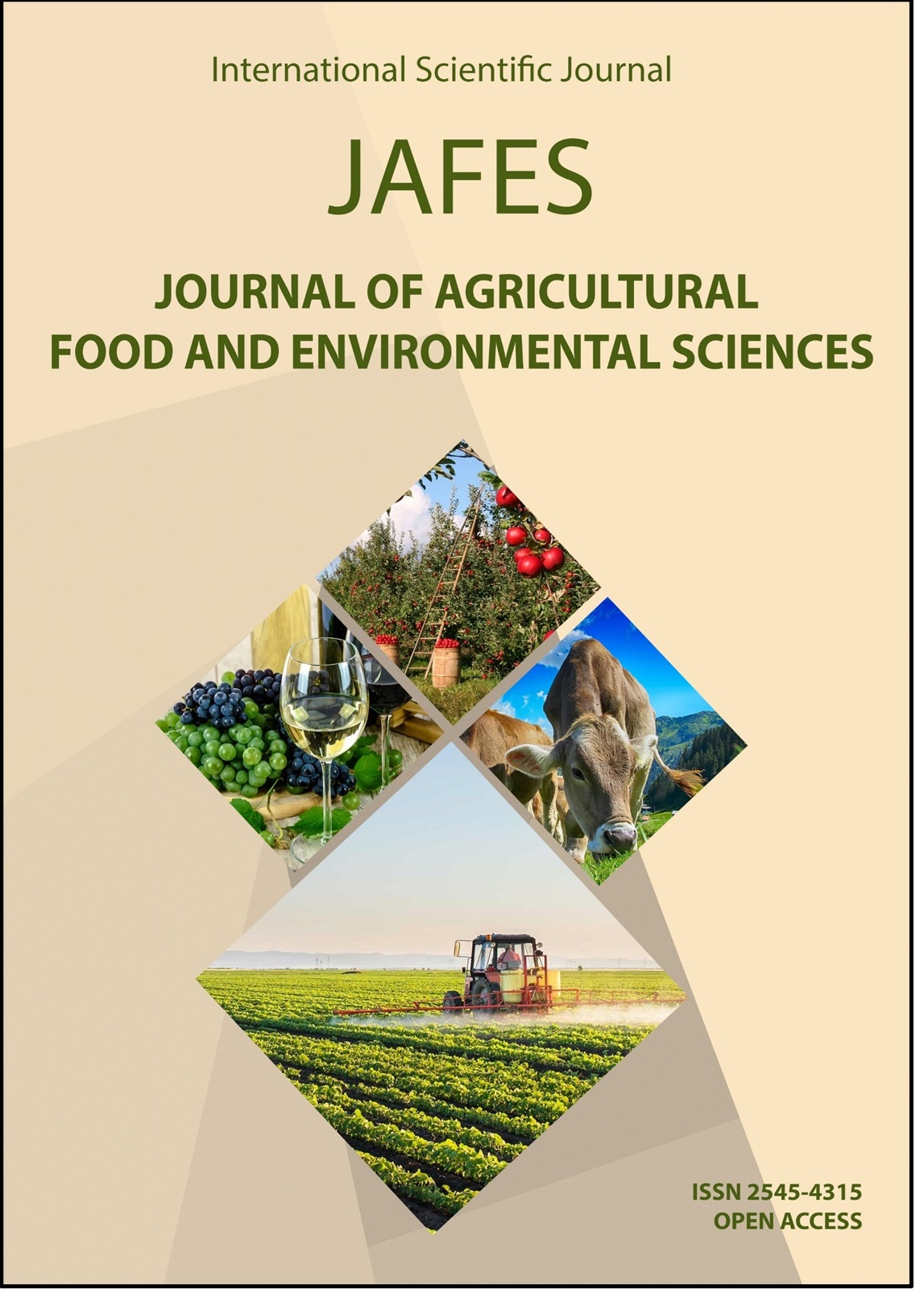BIOLOGICAL CONTROL OF VENTURIA INAEQUALIS – THE CAUSE OF APPLE SCAB IN APPLE
Клучни зборови:
apple scab, biological control, Vacciplant.Апстракт
The main goal of the experiment was to study the possibility for biological control of apple scab by use of innovative biofungicide Vacciplant (a.m. Laminarin) and to compare the results of biological control with those from standard chemical control of this disease. Experiment was conducted during the 2016 in region of Prespa and region of Tetovo, on two apple varieties, idared and golden delicious. In untreated variant in region of Tetovo, was observed very high level of infection (77.21% on the leaves and 24.35% on the fruits), which demonstrated the destructive potential of this apple disease in our country. In region of Prespa, significantly lower level of infection was observed in untreated variant (30% on the leaves and 9.5% on the fruits). Regarding the efficacy of tested fungicides, in region of Tetovo, standard fungicide Merpan (a.m. captan) used in chemical variant provided considerably lower degree of efficacy on leaves and fruits (71.38% and 60.86% respectively), compared with biofungicide used in biological variant (95.13% and 94.78% respectively). In region of Prespa, the efficacy performance of standard fungicides on the leaves and fruits (98.33% and 100% respectively) was almost equal with the performance of biofungicide (99.16% and 100%).
Референци
Bernardon, A M., Joubert, J-M, Horeau, A., 2013. Laminarin used against apple scab. Phytoma, march 2013, No 662.
Eccel, E., Rea, R., Caffara, A., Crisci, A. (2009). Risk of spring frost to apple production under future climate scenarios: the role of phenological acclimation. Int J Biometeorol. 53, pp. 273 – 286.
Ivanovic, M., 1992. Mikoze biljaka. I izdanje. IP “Nauka”, Beograd.
Jones, A.L. (1981) Fungicide resistance: Past experience with Benomyl and Dodine and future concerns with sterolinhibitors. Plant Disease, 65 (12): 990-992.
Kohl, J., Scheer, C., Holb, I.J., Masny, S., Molhoek, W.M.L. (2015). Toward an Integrated use of Biological Control of Cladosporium cladosporoides H39 in Apple Scab (Venturia inaequalis) Management. Plant Dis. 99: 535-543.
Kunz, S., Deising, H., and Mendgen, K. (1997) Acquisition of resistance to sterol demethylation inhibitors by populations of Venturia inaequalis. Phytopathology, 87(12), 1272-1278.
Lespinasse, Y., Pinet, C., Laurens, F., Durel, C.E., Parisi, L. (2002). European research for durable resistance to scab on apple: the D.A.R.E. project. Acta Horticulturae (ISHS), 595: 17 – 22.
MacHardy, W.E., Gadoury, D.M., Gessler, C. (2001). Parasitic and biological fitness of Venturia inaequalis relationship to disease management strategies. Plant Dis. 85: 1036 – 1051.
Mery, A. B.; Joubert, J. M., 2012. Laminarin (Vacciplant®) against appple scab (Venturia inaequalis) and gloeosporium on apple (Gloeosporium album et Perenans). Association Française de Protection des Plantes (AFPP). 10e Conférence Internationale sur les Maladies des Plantes, Tours, France, 3, 4 & 5 Décembre, 2012 2012 pp. 630-639 ref.5
Soriano, J.M., Joshi, S.G., van Kaauwen, M. (2009). Identification and mapping of the novel apple scab resistance gene Vd3. Tree Genetics and Genomes. 5, pp. 475 – 482.
Urbanovich, O., Kazlovskaya, Z. (2008). Identification of scab resistance genes in apple trees by molecular markers. Scientific works of the Lithuanian institute of horticulture and Lithuanian University agriculture, 27 (2): 347 – 357.



